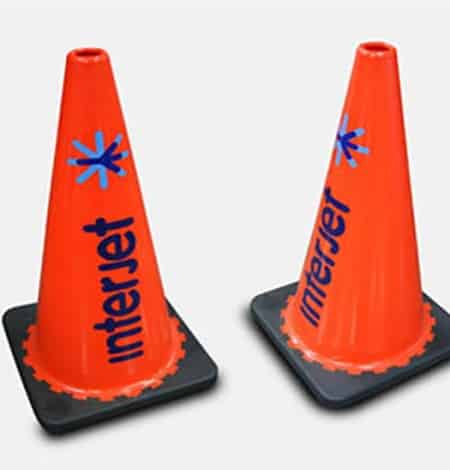Introduction
Explanation of the importance of traffic calming measures in school zones
Traffic calming measures in school zones are crucial for ensuring the safety of students, staff, and parents. With the high volume of traffic during drop-off and pick-up times, it’s important to slow down drivers and reduce the risk of accidents. Speed bumps and speed humps are effective solutions that force drivers to slow down and pay attention to their surroundings. By implementing these measures, schools can create a safer environment for everyone and promote responsible driving habits in the community. It’s essential to choose the right type of traffic calming measure based on the specific needs of the school zone, and to ensure that they are installed correctly to maximize their effectiveness.
Overview of the article’s purpose
The purpose of this article is to provide a comprehensive comparison between speed bumps and speed humps and help readers determine which option is best suited for their school zone. The article will delve into the differences between the two traffic calming measures, including their design, installation, and effectiveness in reducing speed and enhancing safety. By the end of the article, readers will have a clear understanding of the pros and cons of each option and be able to make an informed decision on which one to choose for their school zone.
What are speed bumps and speed humps?
Definition of speed bumps and speed humps
Speed bumps and speed humps are two common traffic calming measures used to slow down drivers in areas where pedestrian and vehicular traffic mix. Speed bumps are typically shorter and steeper than speed humps, with a height of 3-4 inches and a length of 12-14 feet. They are designed to force drivers to slow down to 5-10 mph, making them ideal for areas with low-speed limits. Speed humps, on the other hand, are longer and less steep, with a height of 3-4 inches and a length of 22-24 feet. They are designed to slow down drivers to 15-20 mph, making them suitable for areas with higher speed limits. Both speed bumps and speed humps are effective in reducing speeding and improving safety, but the choice between the two depends on the specific needs and characteristics of the school zone.
Explanation of how they work
Speed bumps and speed humps are both traffic calming devices designed to slow down drivers in areas where pedestrian and vehicular traffic mix. Speed bumps are typically shorter and steeper than speed humps, with a height of 3 to 4 inches and a length of 12 to 14 feet. They are designed to force drivers to slow down to a speed of 5 to 10 mph. Speed humps, on the other hand, are longer and flatter, with a height of 3 to 4 inches and a length of 22 to 24 feet. They are designed to slow down drivers to a speed of 15 to 20 mph. Both speed bumps and speed humps are effective at reducing speed and improving safety in school zones, but the choice between the two depends on the specific needs and characteristics of the area.
Comparison of their effectiveness in slowing down traffic
When it comes to slowing down traffic, both speed bumps and speed humps are effective in their own ways. Speed bumps are more aggressive and can slow down vehicles to a complete stop, making them ideal for areas where speed needs to be drastically reduced, such as near pedestrian crossings. On the other hand, speed humps are gentler and allow vehicles to maintain a slower speed, making them better suited for areas where traffic needs to slow down but not come to a complete stop, such as school zones. Ultimately, the choice between speed bumps and speed humps depends on the specific needs of the area and the desired level of traffic control.
Factors to consider when choosing between speed bumps and speed humps
Traffic volume and speed
Traffic volume and speed are important factors to consider when deciding between speed bumps and speed humps. If the school zone experiences high traffic volume and high speeds, speed humps may be the better option. Speed humps are longer and flatter than speed bumps, which means they allow for a smoother ride at slower speeds. This can be beneficial in areas where drivers may be less likely to slow down for a series of smaller speed bumps. However, if the traffic volume is lower and speeds are not as high, speed bumps may be sufficient to slow down drivers and ensure the safety of students and pedestrians. Ultimately, the decision between speed bumps and speed humps should be based on the specific needs and characteristics of the school zone.
Road width and curvature
Road width and curvature are important factors to consider when deciding between speed bumps and speed humps for a school zone. Speed bumps are typically wider and taller than speed humps, making them more suitable for wider roads with less curvature. On the other hand, speed humps are better suited for narrower roads with more curves, as they are lower and longer, allowing for a smoother ride. It is important to consider the specific characteristics of the road in question when deciding which traffic calming measure to implement in a school zone.
Emergency vehicle access
Emergency vehicle access is a crucial consideration when deciding between speed bumps and speed humps in a school zone. Speed bumps can impede emergency vehicles and slow down response times, which can be dangerous in case of an emergency. On the other hand, speed humps are designed to allow emergency vehicles to pass over them without slowing down significantly. Therefore, if emergency vehicle access is a top priority, speed humps are the better option for school zones. It is important to consult with local emergency services to ensure that the chosen traffic calming measure does not hinder their ability to respond quickly and efficiently.
Cost and maintenance
When it comes to cost and maintenance, speed humps tend to be the more cost-effective option. While speed bumps require more frequent maintenance due to their steeper design, speed humps are typically wider and flatter, allowing for easier snow removal and less wear and tear on vehicles. Additionally, speed humps are often made of recycled materials, making them an environmentally friendly choice. However, it’s important to note that the cost and maintenance of either option will ultimately depend on the specific materials and installation methods used.
Community input and support
Community input and support are crucial when deciding whether to install speed bumps or speed humps in a school zone. It is important to involve parents, teachers, and local residents in the decision-making process to ensure that everyone’s concerns and opinions are heard. By gathering input from the community, school officials can make informed decisions that prioritize the safety of students and pedestrians. Additionally, community support can help to ensure that drivers adhere to the new traffic calming measures, ultimately making the school zone a safer place for everyone.
Pros and cons of speed bumps
Advantages of speed bumps
One of the main advantages of speed bumps is that they are highly effective at slowing down vehicles. They are designed to be taller and wider than speed humps, which means that drivers have to slow down significantly in order to navigate them safely. This makes them an ideal choice for school zones, where safety is a top priority. Additionally, speed bumps are often made from durable materials like concrete or asphalt, which means that they can withstand heavy traffic and harsh weather conditions. This makes them a cost-effective option for schools that want to improve safety without having to replace their speed control measures frequently.
Disadvantages of speed bumps
While speed bumps are effective in slowing down traffic, they do have some disadvantages. One of the main drawbacks is that they can cause discomfort and even damage to vehicles if drivers go over them too quickly. This can lead to complaints from drivers and potentially costly repairs for the school or municipality responsible for maintaining the speed bumps. Additionally, speed bumps can be difficult for emergency vehicles to navigate, potentially delaying response times in critical situations. Finally, speed bumps can be less effective than speed humps in slowing down traffic over longer stretches of road, as drivers may simply speed up between bumps.
Examples of when speed bumps are appropriate
Speed bumps are most appropriate in areas where drivers need to slow down significantly, such as in parking lots or private roads. They are also effective in areas where there are frequent stops, such as at the entrance of a school or a hospital. Speed bumps are also useful in areas where there are sharp turns or blind corners, as they force drivers to slow down and pay attention to their surroundings. Additionally, speed bumps are ideal for areas where there is heavy pedestrian traffic, as they provide a visual cue for drivers to slow down and be cautious. Overall, speed bumps are a great option for areas where safety is a top priority and drivers need to be reminded to slow down.
Pros and cons of speed humps
Advantages of speed humps
Advantages of speed humps include their ability to slow down traffic without causing damage to vehicles. They are also more effective at reducing speeds over a larger area compared to speed bumps. Additionally, speed humps are less jarring to drivers and passengers, making them a more comfortable option for drivers who may need to traverse them frequently. They are also easier to maintain and can be painted with reflective materials to increase visibility at night. Overall, speed humps are a great option for school zones and other areas where traffic needs to be slowed down consistently over a larger area.
Disadvantages of speed humps
While speed humps are effective in slowing down traffic, they do have some disadvantages. One major drawback is that emergency vehicles, such as ambulances and fire trucks, may have difficulty navigating over them at high speeds. This can delay response times and potentially put lives at risk. Additionally, speed humps can be a nuisance for drivers who are not speeding, as they must slow down significantly to avoid damage to their vehicles. Finally, speed humps can be more expensive to install and maintain than speed bumps, which may be a consideration for schools with limited budgets.
Examples of when speed humps are appropriate
Speed humps are appropriate in areas where traffic calming is needed, but the speed limit is still relatively high. For example, in school zones where the speed limit is 25 mph or higher, speed humps can be an effective way to slow down drivers without causing damage to their vehicles. They can also be used in residential areas where there are frequent pedestrians or bicyclists. Speed humps are particularly effective in areas where there are no sidewalks or where the sidewalk is close to the road, as they force drivers to slow down and be more aware of their surroundings. Additionally, speed humps are often used in parking lots or private roads where speed limits are low, but drivers tend to speed.
Conclusion
Summary of the article’s main points
In summary, the article discusses the differences between speed bumps and speed humps and which one is best suited for school zones. Speed bumps are taller and more abrupt, while speed humps are longer and more gradual. Both options can effectively slow down traffic, but speed humps are generally preferred for school zones as they are less jarring and provide a smoother ride for buses and emergency vehicles. Additionally, the article emphasizes the importance of proper placement and signage for speed bumps or humps to be effective in reducing speed and increasing safety in school zones.
Recommendation for choosing between speed bumps and speed humps in school zones
When it comes to choosing between speed bumps and speed humps in school zones, it ultimately depends on the specific needs and goals of the school and community. Speed bumps are more effective at slowing down vehicles to a complete stop, making them a good choice for areas where safety is a top priority. On the other hand, speed humps are designed to slow down vehicles to a lower speed, making them a better option for areas where traffic flow is important. It’s important to consider factors such as traffic volume, speed limits, and pedestrian activity when making a decision. Consulting with traffic safety experts and local officials can also provide valuable insight and guidance in choosing the right traffic calming solution for your school zone.






